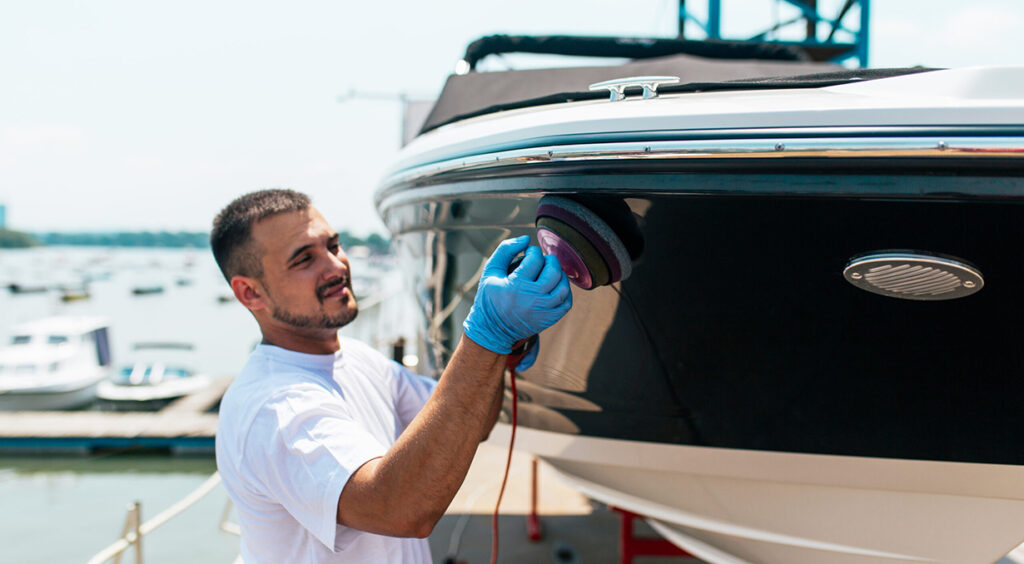Preventive Maintenance for Boat Engines: Tips to Prolong Your Engine’s Lifespan
Proper maintenance of your boat’s engine is crucial for ensuring a smooth and enjoyable experience on the water. Regular upkeep not only prolongs the life of your engine but also helps prevent unexpected breakdowns. Here’s a comprehensive guide to help you keep your boat engine in top shape.
Importance of Preventive Maintenance
Preventive maintenance is essential for avoiding costly repairs and ensuring that your boat’s engine runs efficiently. By following a regular maintenance schedule, you can catch potential issues early and keep your boat in excellent condition.
Preventive maintenance helps to:
- Avoid Costly Repairs: Regular maintenance can identify small issues before they become significant problems, saving you money in the long run.
- Ensure Safety: A well-maintained engine reduces the risk of breakdowns while out on the water, enhancing safety.
- Improve Performance: Consistent upkeep helps your engine run more smoothly and efficiently, improving overall performance.
- Extend Engine Life: Routine maintenance tasks can significantly extend the lifespan of your engine, providing more years of reliable service.
Oil Check and Change
Regularly checking and changing the oil in your boat engine is one of the most important maintenance tasks. Dirty oil can cause engine wear and reduce performance.
- Check the Oil Level: Use the dipstick to check the oil level and ensure it’s within the recommended range.
- Frequency: Check before every outing and at least once a month during the boating season.
- Tip: Make sure the boat is level when checking the oil to get an accurate reading.
- Change the Oil: Follow the manufacturer’s recommendations for oil change intervals. Typically, this should be done every 50-100 hours of operation or at the start of each season.
- Tools Needed: Oil extractor pump, oil filter wrench, new oil filter, and the recommended type of oil.
- Steps:
- Warm up the engine to help the oil flow out easily.
- Use the oil extractor pump to remove the old oil.
- Replace the oil filter.
- Add the new oil slowly, checking the level with the dipstick.
Inspect and Clean the Fuel System
A clean fuel system ensures that your engine runs smoothly and efficiently.
- Check Fuel Filters: Inspect and replace fuel filters regularly to prevent clogs.
- Frequency: Inspect before each season and replace as needed.
- Tip: Carry spare filters on board in case of clogs during a trip.
- Use Fuel Stabilizers: Add fuel stabilizers to your tank to prevent fuel degradation, especially during storage.
- Benefits: Stabilizers prevent the fuel from breaking down and forming varnish, which can clog the fuel system.
- Clean Fuel Lines: Inspect and clean fuel lines to avoid blockages.
- Tools Needed: Fuel line cleaner and air compressor.
- Steps:
- Disconnect the fuel lines.
- Use a cleaner to remove any deposits.
- Blow out the lines with compressed air.
Cooling System Maintenance
Keeping the engine’s cooling system in good condition is vital to prevent overheating.
- Check Coolant Levels: Ensure the coolant is at the appropriate level.
- Frequency: Check before each outing and top off as necessary.
- Tip: Use the coolant recommended by the manufacturer for the best performance.
- Inspect Water Pump: Check the water pump impeller and replace it if necessary.
- Frequency: Inspect annually and replace every 2-3 years.
- Steps:
- Remove the water pump housing.
- Check the impeller for wear and replace if any damage is found.
- Reassemble the water pump housing.
- Flush the System: Periodically flush the cooling system to remove any salt, sand, or debris.
- Frequency: Flush after every trip in saltwater or every few trips in freshwater.
- Tools Needed: Flushing kit and fresh water.
- Steps:
- Connect the flushing kit to the engine’s water intake.
- Run fresh water through the system for several minutes.
Inspect Belts and Hoses
Belts and hoses are critical components that should be regularly inspected for signs of wear or damage.
- Check for Cracks and Wear: Look for cracks, fraying, or other signs of wear on belts and hoses.
- Frequency: Inspect at least every 6 months or as per the manufacturer’s recommendation.
- Tip: Keep spare belts and hoses on board for emergencies.
- Replace as Needed: Replace any damaged belts or hoses immediately to prevent breakdowns.
- Tools Needed: Basic hand tools such as wrenches and screwdrivers.
- Steps:
- Remove the worn belt or hose.
- Install the new belt or hose, ensuring it is properly aligned and tensioned.
Proper Storage of the Engine
Storing your engine properly during the off-season is crucial to maintaining its condition.
- Use a Cover: Protect the engine with a cover to keep out dust and debris.
- Tip: Use a breathable cover to prevent moisture buildup.
- Store in a Dry Place: Keep the engine in a dry, cool place to prevent corrosion.
- Tip: Use a dehumidifier in the storage area to control moisture levels.
- Prepare for Long-Term Storage: If storing for an extended period, follow the manufacturer’s guidelines for long-term storage, including adding fuel stabilizers and changing the oil.
- Steps:
- Add fuel stabilizer to the fuel tank and run the engine for a few minutes to circulate the stabilizer.
- Change the oil and filter to prevent acids and contaminants from damaging the engine.
- Remove the battery and store it in a cool, dry place, keeping it charged.
- Steps:
Recommended Tools and Products
Having the right tools and products makes maintenance easier and more effective.
- Oil Extractor: For easy oil changes.
- Recommendation: Look for a manual or electric oil extractor that is easy to use and suitable for your engine size.
- Fuel Additives: To keep the fuel system clean.
- Recommendation: Choose a high-quality fuel stabilizer and cleaner that works with your type of fuel (gasoline or diesel).
- Cooling System Flush Kits: For maintaining the cooling system.
- Recommendation: Use a flush kit that is compatible with your engine’s cooling system.
Additional Tips from Professionals
- Regularly Run the Engine: Running the engine periodically helps keep it in good working order.
- Tip: Even during the off-season, run the engine every few weeks to keep the internal components lubricated.
- Follow the Manufacturer’s Manual: Always refer to the manufacturer’s manual for specific maintenance instructions and schedules.
- Tip: Keep a log of all maintenance tasks and dates to ensure nothing is overlooked.
By following these preventive maintenance tips, you can ensure that your boat engine remains reliable and efficient, giving you peace of mind and more time to enjoy the water.
Happy boating!






